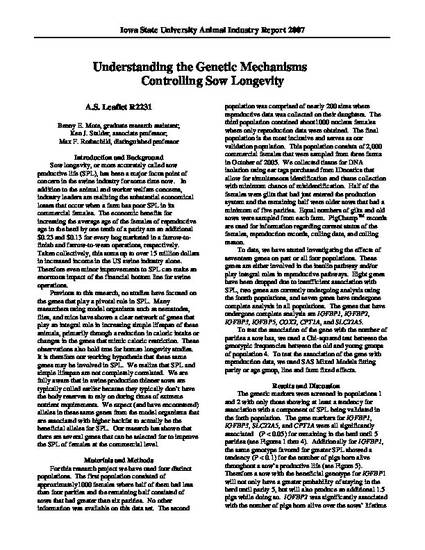
Sow longevity, or more accurately called sow productive life (SPL), has been a major focus point of concern in the swine industry for some time now. In addition to the animal and worker welfare concerns, industry leaders are realizing the substantial economical losses that occur when a farm has poor SPL in its commercial females. The economic benefits for increasing the average age of the females of reproductive age in the herd by one tenth of a parity are an additional $0.23 and $0.13 for every hog marketed in a farrow-tofinish and farrow-to-wean operations, respectively. Taken collectively, this sums up to over 15 million dollars in increased income in the US swine industry alone. Therefore even minor improvements to SPL can make an enormous impact of the financial bottom line for swine operations.
Previous to this research, no studies have focused on the genes that play a pivotal role in SPL. Many researchers using model organisms such as nematodes, flies, and mice have shown a clear network of genes that play an integral role in increasing simple lifespan of these animals, primarily through a reduction in caloric intake or changes in the genes that mimic caloric restriction. These observations also hold true for human longevity studies. It is therefore our working hypothesis that these same genes may be involved in SPL. We realize that SPL and simple lifespan are not completely correlated. We are fully aware that in swine production thinner sows are typically culled earlier because they typically don’t have the body reserves to rely on during times of extreme nutrient requirements. We expect (and have encountered) alleles in these same genes from the model organisms that are associated with higher backfat to actually be the beneficial alleles for SPL. Our research has shown that there are several genes that can be selected for to improve the SPL of females at the commercial level.
Available at: http://works.bepress.com/kenneth_stalder/42/
